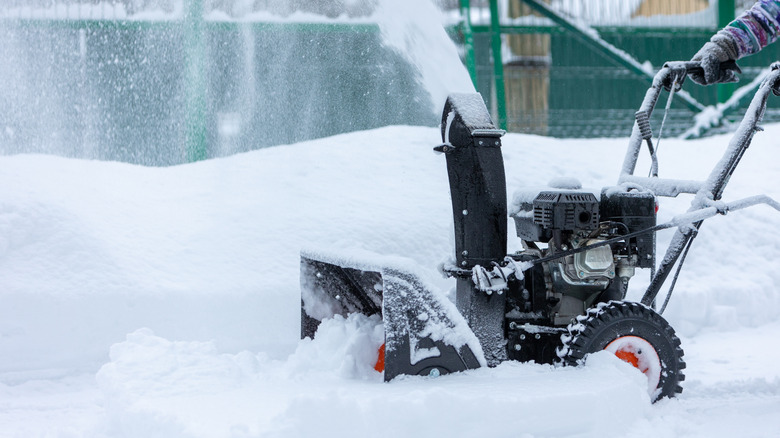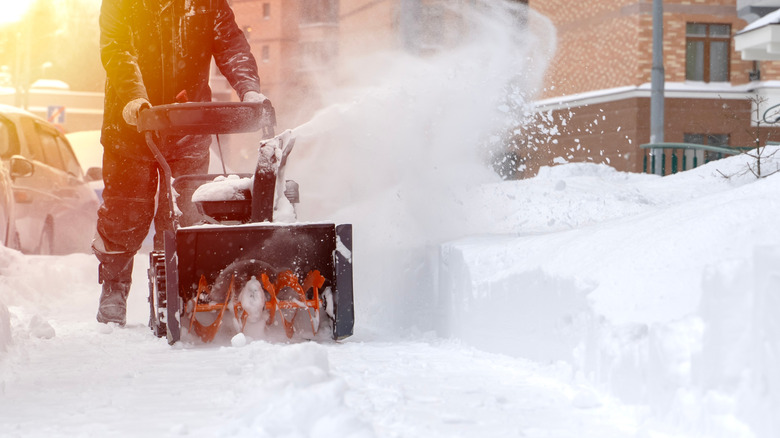Winter Is On The Way. How To Use Your Snow Blower On Your Driveway More Efficiently
Cooling temperatures and shorter days mean that winter is inevitably coming. If you live in an area that happens to get considerable snowfall (we're looking at you, Buffalo), you most likely have invested in a top-rated snow blower. These machines quickly and efficiently clear driveways and sidewalks, potentially saving you hours of back-breaking labor. There are many snow blower safety tips to keep in mind in winter, and there are also specific techniques to use your snow blower more efficiently that you might not know about.
While you can run your snow blower across the driveway with no solid plan, the most efficient way to remove snow is to start in the middle of your driveway. Begin by making one pass down the center of the driveway, from the garage to the street. Work outward toward the edges in a loop pattern, running parallel to your first cut. What makes this way efficient is that you won't be changing the chute direction — just keep throwing the snow to the same side of the driveway (or both sides as you work outward). This minimizes overall time since you won't need to adjust the chute as often.
Other ways to use your snow blower efficiently
Knowing the most efficient technique for snow-blowing is key, but there are other factors that will help you maximize your snow blower's performance and efficiency. First, it's essential to clear your snow often during major snowstorms, rather than waiting for it all to fall. It's much easier for your snow blower to clear five or six inches of freshly fallen snow than a foot of dense snow. As you clear your driveway, maintain a consistent and moderate pace to avoid clogging the chute or overworking the engine. A common mistake with your snow blower is to rush the job or go at full speed — taking it slow and steady will ensure a cleaner pass and help prevent time-consuming clogs.
Before you start, you'll need to check the wind direction and aim your chute so the wind carries the snow away from the cleared area. This prevents blowback, saving you from clearing the same snow more than once. You can also coat the inside of the chute, the auger, and the impeller with silicone or non-stick spray to prevent wet, sticky snow from clumping and clogging the machine. Although this may add a few minutes to the start of your snow removal routine, the time and effort saved by avoiding clogs will be well worth it.

